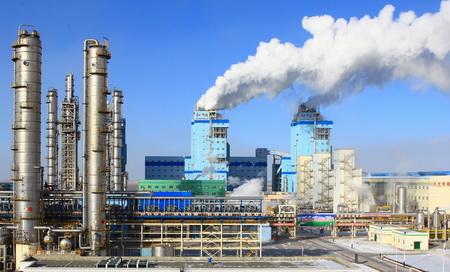On April 10, the Shandong Provincial Government released the implementation plan for the transformation and upgrading of coal chemical industry in Shandong Province. The plan aims to promote the sustainable and healthy development of the province's coal chemical industry, and strive to create new advantages. The implementation plan has comprehensively elaborated six aspects including development status, existing problems, development trends, development goals, key tasks, implementation paths, and safeguard measures. I. Development status After years of development, Shandong Province has formed a solid foundation for the coal chemical industry, focusing on the six main development lines of “coking, fat, alcohol, alkyne, benzene and oil†to form coal coking and coal gasification (synthetic ammonia, urea, methanol and acetic acid Etc.) Industry chain and related product lines. In 2013, the province produced 7.83 million tons of synthetic ammonia, 10.63 million tons of urea (not purified), 43.17 million tons of coke (894, -19.00, -2.08%), 1.67 million tons of coal tar, 600,000 tons of crude benzene, and methanol 476.7 Ten thousand tons, 6.4 billion cubic meters of coke oven gas, and 3.07 million tons of liquefied natural gas (LNG). The urea output ranks first in the country. II. Existing problems In recent years, the coal chemical industry in Shandong Province has achieved rapid development and provided strong support for the province's economic and social development. However, the traditional technology and product ratio is large, the pressure on environmental governance is large, and the resource advantages are weak. More prominent. The State Council's "Strategy Action Plan for Energy Development (2014-2020)" incorporates Shandong province into the coal consumption control area and clearly proposes that by 2020, the coal consumption in the four provinces and cities of Beijing, Tianjin, Hebei and Shandong will be reduced by 100 million tons from 2012. The newly revised “Environmental Protection Law†and “Air Pollution Prevention and Control Action Plan†and other regulations and policies put forward higher requirements for pollutant emissions from coal chemical companies. Coal chemical companies have a large amount of water, high energy consumption, and are tasked with energy saving, emission reduction and pollution control. At present, the coal resources in Shandong Province are increasingly depleted. The province's annual coal imports amounted to about 250 million tons. Coal prices are high and the conversion costs are high. At the same time, the costs of industrial land, construction, raw materials, logistics, and labor are significantly higher than those in the western provinces, causing the production and operation costs of coal chemicals to continue to climb. Third, the development trend Affected by the overcapacity and slower growth of the downstream industries, the demand and profitability of traditional coal chemical industries such as synthetic ammonia, urea and coke in China have been greatly reduced. The elimination of outdated production capacity and the upgrading of technology are inevitable. Modern coal chemical industry has become the main direction of industrial adjustment and upgrading. At present, China's coal-to-oil, olefins, aromatics, natural gas, and ethylene glycol, as well as coke oven gas CNG, LNG and other technological breakthroughs and demonstration projects have made significant progress, but the pressure on environmental protection and resource conservation will continue to increase in the future. Coal chemical industry must develop clean and efficient production technologies to improve industrial resource utilization and environmental protection. IV. Development goals Shandong Province will accelerate the transformation from traditional coal chemical industry to modern coal chemical industry, vigorously develop modern coal chemical industry, compress backward production capacity of coal chemical industry, and focus on the development of deep processing and fine processing products to achieve industrial transformation and upgrading. By 2017, the province's coking industry will complete the elimination of backward production capacity for coke ovens below 4.3 meters, and the key projects in the coking industrial chain will basically be completed. By 2020, the coal chemical industry will basically complete the elimination of backward production capacity. The proportion of modern coal chemical industry and the fine chemical industry are large. Increased in magnitude. Key enterprises have achieved cleaner production. Wastewater, carbon dioxide, sulfur dioxide, and nitrogen oxide emissions have outperformed national, industry, or local mandatory standards. The energy consumption of major products has reached the leading domestic level. By 2017, the comprehensive energy consumption per million yuan of coal chemical industry output will be 3.5% lower than in 2013; by 2020, the comprehensive energy consumption per million yuan will be reduced by 3% compared to 2017. By 2017, seven provincial-level industrial bases will be built in Lunan, Zaozhuang, Heze, Jining, Liaocheng, Lubei and Luzhong, and by 2020, three provincial-level industrial demonstration bases such as Weifang, Zibo and Linyi will be built. V. Key Tasks and Implementation Paths We will promote the extension of existing primary products to downstream products, fine chemical products, and new chemical materials, and organically combine petrochemicals and bio-chemicals to foster the formation of five major industrial chains for chemical fertilizers, fine chemicals, synthetic materials, clean energy, and deep processing of coking products. The fine chemical industrial chain, based on methanol, acetic acid, and synthesis gas, focuses on the development of methanol deep processing products, acetic acid, urea, polypropylene, vinyl acetate, acetic anhydride, oxalic acid, dimethyl ether, ethylene-vinyl acetate copolymer (EVA) Low-density polyethylene (LDPE), dimethyl amide (DMF) and other products. The clean energy industry chain uses methanol as raw material to produce acetic acid, dimethyl ether, olefins, and denatured methanol fuel products, forming a large-scale clean energy base. Promoting the implementation of the methanol alternative petrol project, striving to be listed as the pilot province of the national methanol car, researching and formulating the implementation opinions on the promotion and application of methanol gasoline Sixth, safeguard measures The follow-up will promote the sustained and healthy development of the province's coal chemical industry by strengthening technological innovation, fiscal and tax support, corporate management, and broadening financing channels. Custom Aluminium Coil,Aa3003 Aluminium Coils,Aluminium Coil,Bottom Aluminium Coils Jiangyin Xinren Aluminium Technology Co.,Ltd , https://www.jyxinrenaluminium.com
Shandong boosts transformation and upgrading of coal chemical industry